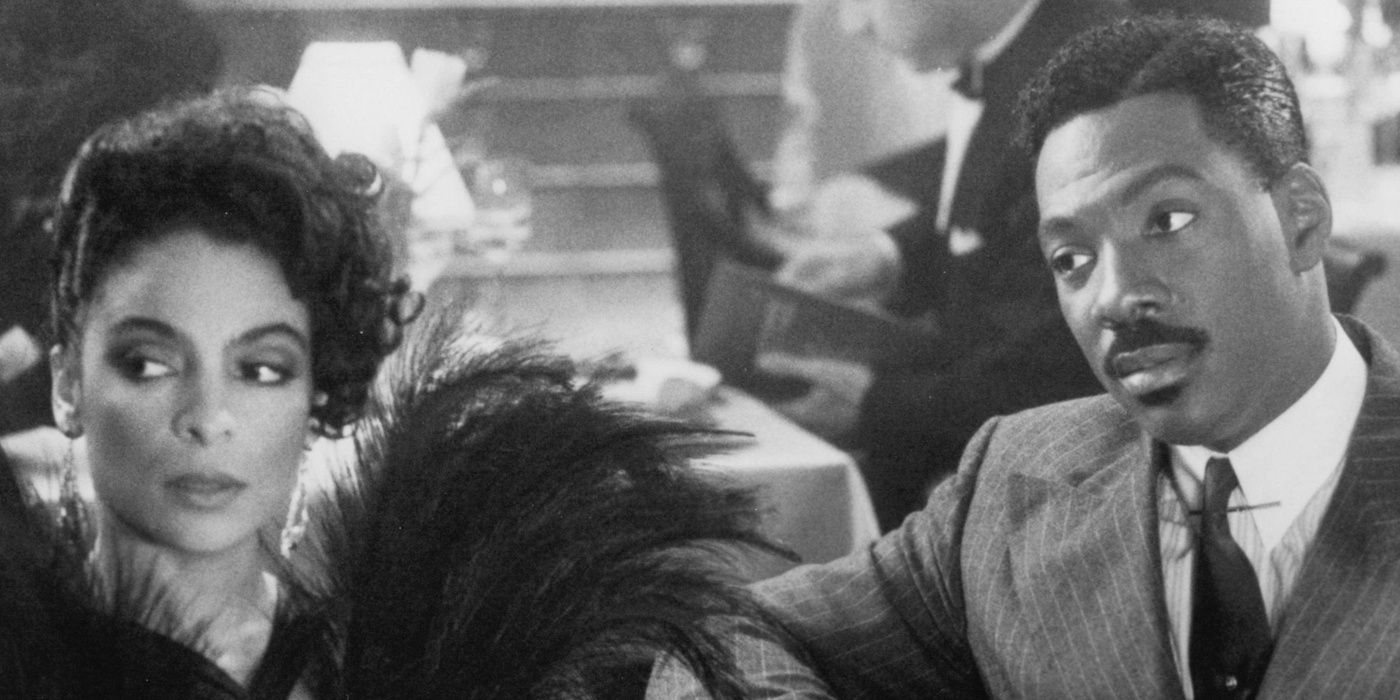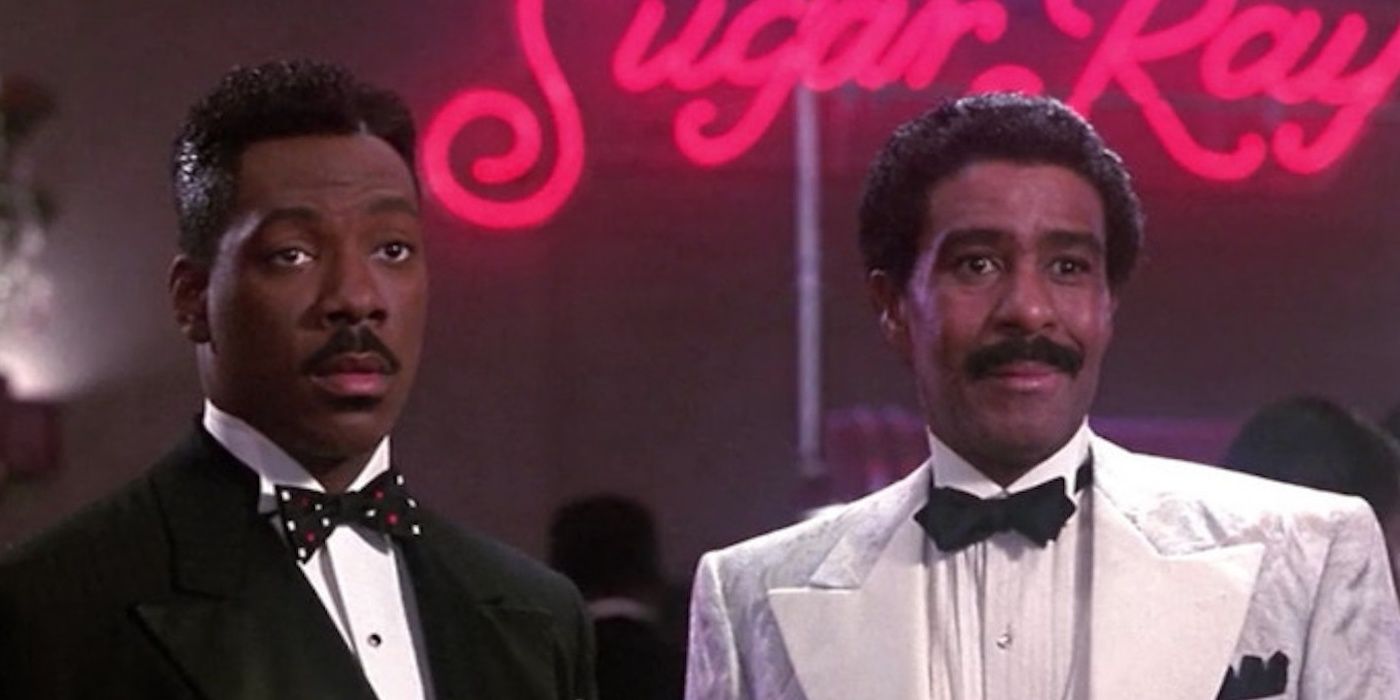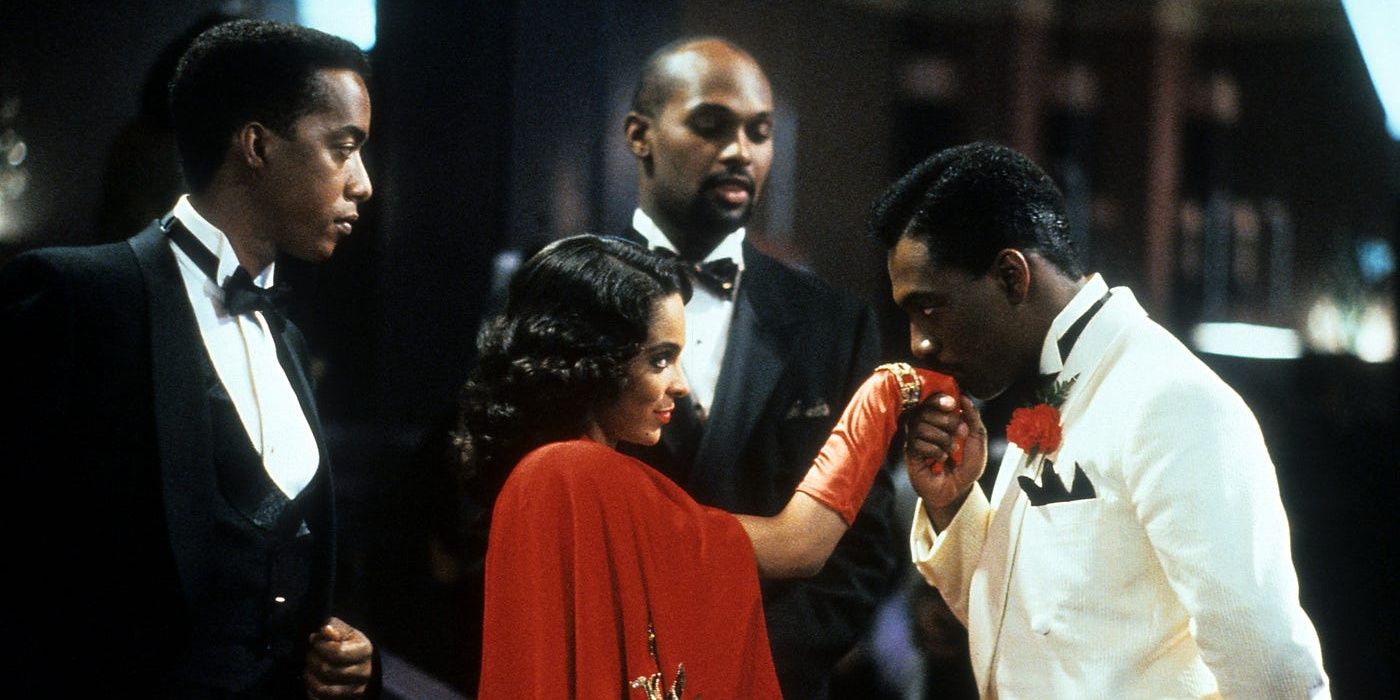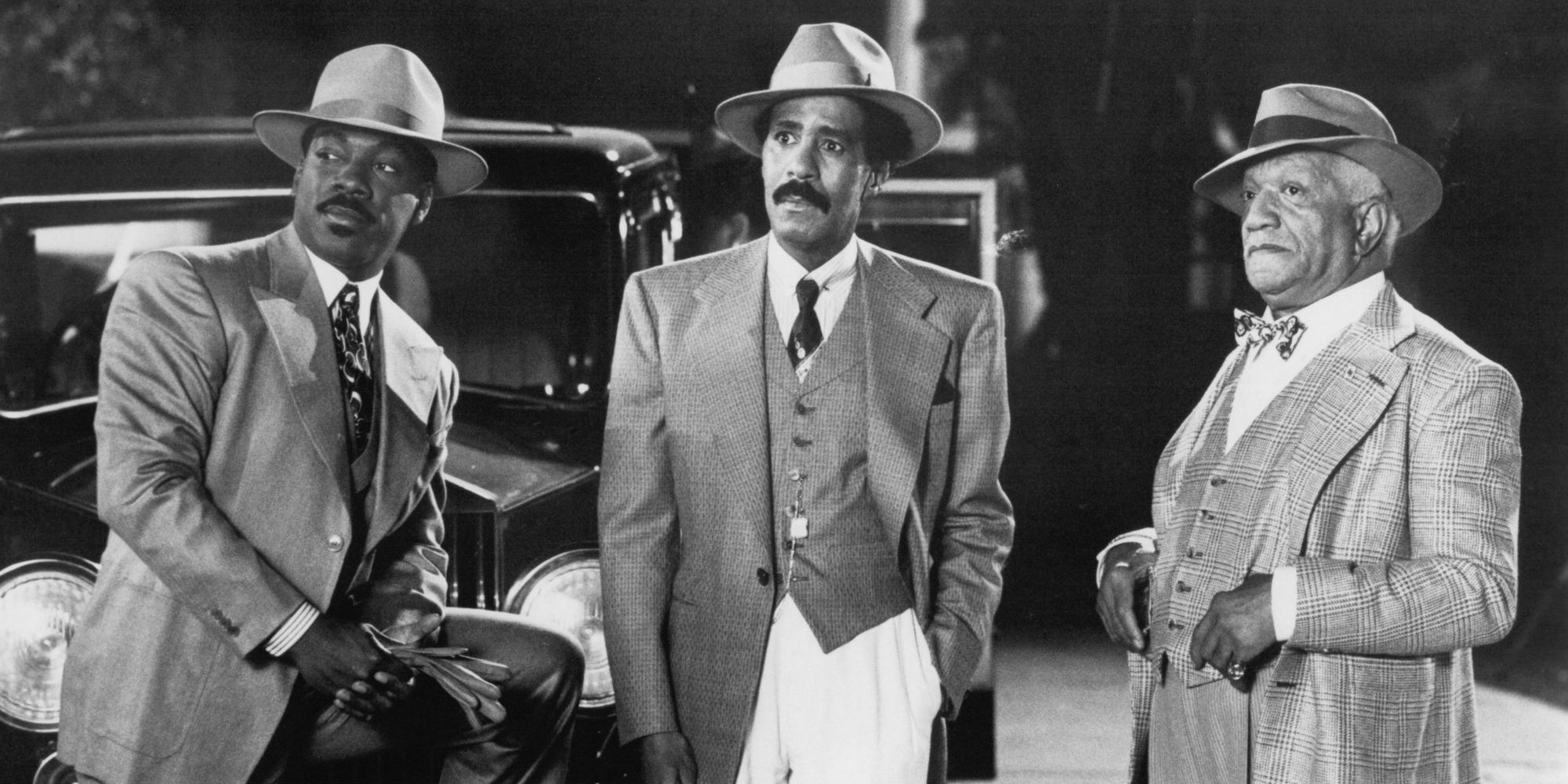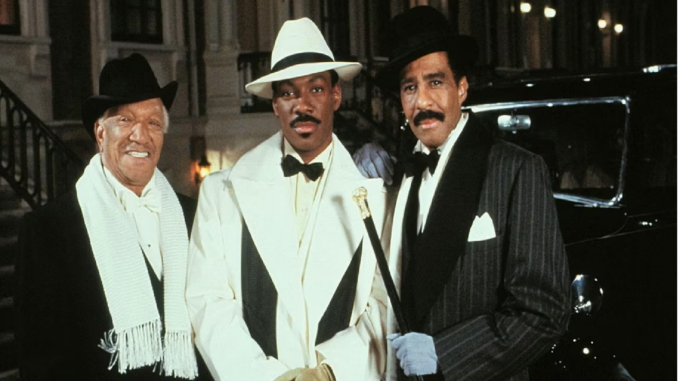
By leaping off the screen on Saturday Night Live when he was only 19, Eddie Murphy instantly proved himself as one of the most revolutionary voices in comedy that American pop culture has ever seen. He quickly captured that momentum into overnight success by becoming one of the biggest stand-up comedians in America and a certified movie star with films like Beverly Hills Cop and Trading Places. He captured a nation’s attention with his abrasive intensity, foul-mouthed antics, and rock-star charisma, and it usually translated into every avenue he explored. It stands to reason that a guy as ambitious as him would eventually want to try out something new, and he put himself in the position to get to pay respect to his idols and make his own movie. That turned out to be Harlem Nights, and it became a disaster that severely damaged his momentum and served as a major embarrassment for him.
What Is ‘Harlem Nights’ About?
In 1930s New York, an illegal gambling hall owner named Sugar Ray (Richard Pryor) and his associate Quick (Murphy) must deal with the daily headaches and dangers of surviving the high-rolling gangster lifestyle. Most of the plot involves a rival white gangster named Bugsy (Michael Lerner) seeking to take down Sugar Ray’s club, using a corrupt cop named Cantone (Danny Aiello) to try and extort the club. As stuffed with clichéd plotlines as this film is, it is more concerned with eating up scenes with gassy improv and editing that seems to think that every scene is funnier with an unnecessary extra 20 seconds of the same joke being told.
The editing is quite lax, which unfortunately diminishes the humor, rendering what could have been amusing moments rather tedious and devoid of charm. While the production design is impressive — trying to recall the charm that The Sting held for audiences over a decade prior — and the film does have funny lines occasionally, most of it is stilted and rambling. It must also be commended that it’s a fresh perspective to see a gangster film with so many Black characters that doesn’t prioritize racism as a dominant focus. As Pryor put it in an interview with Rolling Stone, “You walk around here and look at the people — have you ever in your life seen this many black people on a movie set? I haven’t.”
What’s more shocking is how awful Murphy in particular is, as he comes off more like an animatronic version of himself, having no investment in anything until he has to spit out his requisite jokes audiences had already heard too many times by 1989. This film came out during Murphy’s Raw-era, when most of his comedy and antics were defined by the rampant misogyny that he harbored no apology for, and it comes out in droves here. There’s an entire scene devoted to Murphy getting into a fistfight with a woman named Vera (Della Reese), hurling slurs at her while forcing his signature laugh.
Numerous scenes revolve around the predominantly male cast telling the female characters to shut up or else they’ll kick their ass, and the only two prominent female characters are routinely used as a punching bag and an empty love interest, respectively. This was a film written and directed by Murphy, and he admitted to Spike Lee in a one on one intevriew that the big issue was “the writing of it. It was just written f***d up, and that’s because I threw it together real quick,” and that created a situation where he was wearing “too many different hats to be wearing the same time for the first time,” so he fell back on his instincts at the time. It serves as a snapshot of where his sense of artistry was during that period, and how he was left unchecked thanks to not having anybody in his life who would tell him no.
The Film’s Best Assets Are Richard Pryor and Redd Foxx
If the film can be said to have any bright spot, it’s the presence of Richard Pryor and Redd Foxx in the two most prominent supporting roles. Pryor is positioned as both a business manager, a father figure, and Murphy’s straight man for most of the movie, giving him a role that lets him dabble in both his comedic and dramatic range. He tends to rely on his old acting shtick, but he does add a sense of dignity to his scenes and has good chemistry with the actors that aren’t Eddie Murphy. Foxx is more of a pure comic relief, dishing out constant insults to everyone in view while being made fun of for his bad eyesight, and while he’s essentially rehashing his Sanford and Son routine, he does fit the period nature very well, feeling like a character you could have seen in something like Little Caesar. You can’t say that they really save the movie, as they’re still left to drift through meandering scenes and are forced to turn nothing bits into semi-cohesive moments, but they at least have more personality and charisma than Murphy does at any point in his scenes.
One of the best attributes that Murphy had as a comic force in his heyday was his ability to pay his success forward towards Black talent in the world of comedy. He was particularly sharp at recognizing upcoming Black talent and putting them in his movies, most notably giving Chris Rock a scene-stealing role as an office worker in Boomerang and getting Dave Chappelle in The Nutty Professor as the insult comic.
Murphy was always upfront about his biggest inspiration being Richard Pryor, and how excited he was at the idea of working with his idol, only to be met with extreme disappointment. He claimed to Spike Lee that Pryor only did the movie for “a big payday” and that he harbored no goodwill towards Murphy. Murphy theorized that Pryor blamed Murphy’s newfound success for the recent failings of his own career, and how he didn’t realize that Pryor was already suffering from his multiple sclerosis condition, which wasn’t public knowledge yet. He admitted that “I never put it together what was happening till afterwards. So it was kind of sad, that part of it.” It’s bad enough to be disappointed in your idol, but to unintentionally disrespect his ailment is soul-crushing.
‘Harlem Nights’ Contributed to a Consistent Critical Pan of Eddie Murphy’s Movies
The reception to the film wasn’t only bad, it was cataclysmic. Earning Murphy a Razzie for Worst Screenplay and widespread derision from critics like Gene Siskel and Roger Ebert, it started a trend of critics dogging on Murphy’s films to a degree that prompts reflection the optics of the white-majority film critics trashing the films of the arguably most prominent Black star of the 1980s. Granted, some of those films were truly terrible, like Beverly Hills Cop III or Vampire in Brooklyn. On the other hand, he made Boomerang during that span, and it continues to stand the test of time as both one of his best films and a snapshot of how out of touch white critics were with the vast array of Black culture at the time. It was so notable that director Reginald Hudlin spoke out about it 25 years later, pointing out how white critics were so clueless that one person alleged that “the movie was called a science fiction film, because those writers didn’t know about any successful black companies.” It’s hard not to wonder if the reception to Harlem Nights would have been quite so vitriolic had there been more prominent Black critics who might have had a more nuanced perspective on the film’s efforts. It was so notable that Murphy himself spoke about it years later, saying “they went extra mean on it because it was me. I guess they viewed it as someone with an ego out-of-control doing all these things.”
Murphy may have had a notorious ego throughout the 1980s, so notable that he brilliantly skewered it in Bowfinger as action star Kit Ramsey. But to paint him as a creative monster run amok was cruel and shortsighted on the part of his worst critics. Every indication paints a picture of a guy earnestly trying to chase an ambition while paying respect to those he owed his artistic drive to. It’s a shame that so many things went wrong, and he didn’t have the directorial skills or baseline enjoyment to make it something worthwhile. But it still stands as an important fork in the road, where Murphy figured out his priorities and realized that he was much more potent when he was just in front of the cameras.
